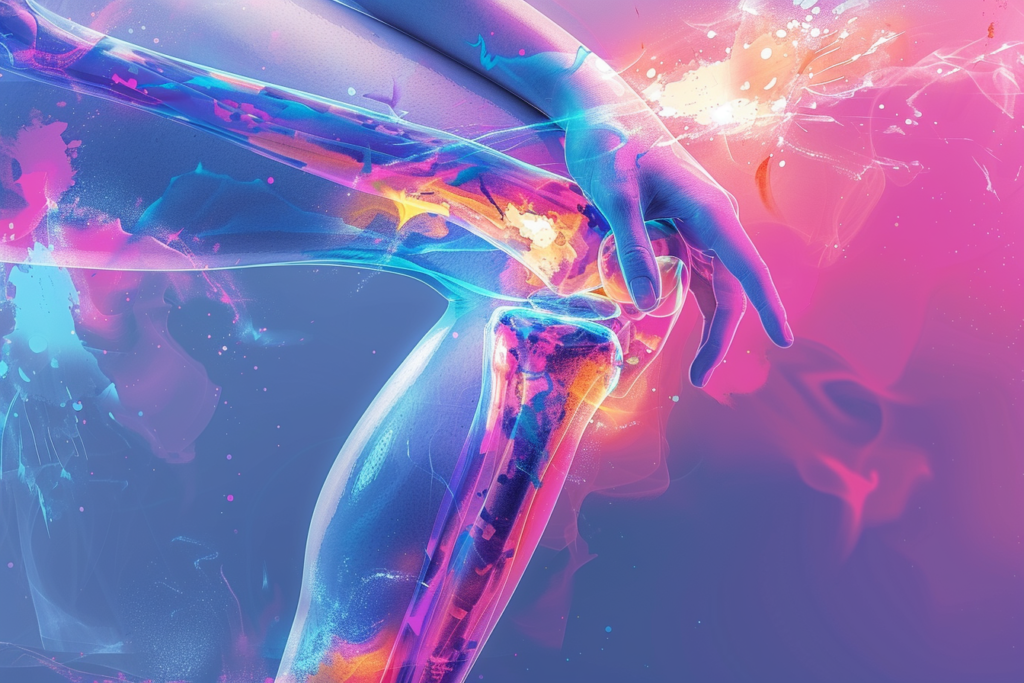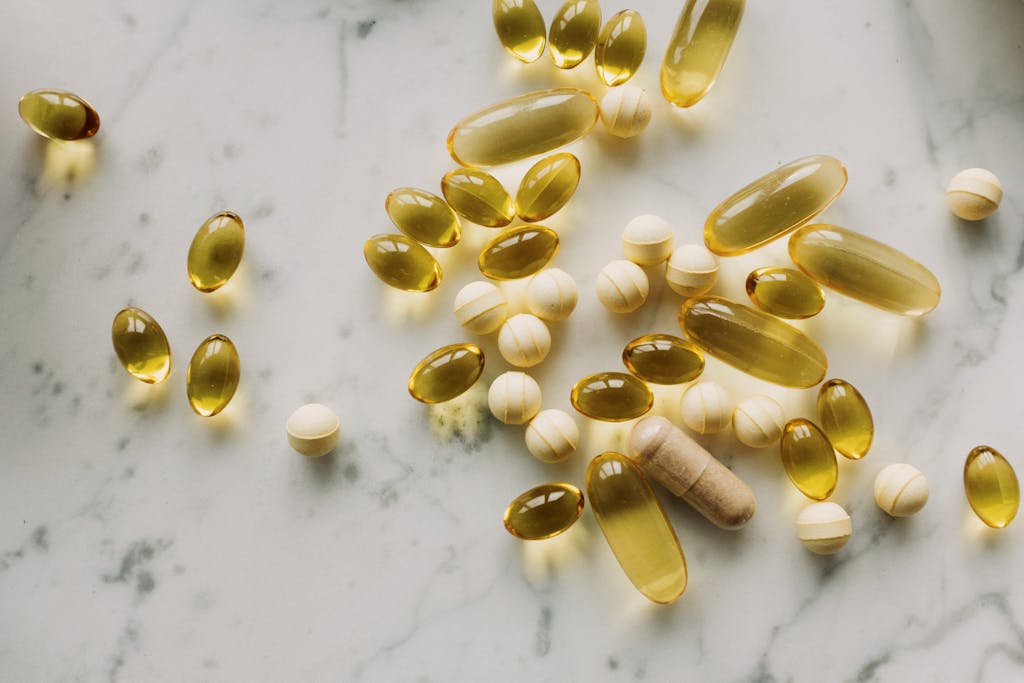I. Introduction
Osteoarthritis is a degenerative joint disease that affects millions of people worldwide, causing pain, stiffness, and reduced mobility. As the most common form of arthritis, it occurs when the protective cartilage that cushions the ends of bones wears down over time. This condition can significantly impact a person’s quality of life, making everyday activities challenging and sometimes unbearable.
Effective pain management is crucial for individuals living with osteoarthritis. By implementing a comprehensive approach to pain relief, patients can improve their mobility, maintain independence, and enjoy a better overall quality of life. This guide will explore various strategies for managing osteoarthritis pain, including conventional medical treatments, lifestyle modifications, alternative therapies, and emerging research, empowering individuals to take control of their condition and find relief.

II. Understanding Osteoarthritis Pain
Osteoarthritis pain primarily stems from the breakdown of cartilage in the affected joints. As the cartilage deteriorates, bones begin to rub against each other, causing inflammation, swelling, and pain. Other factors contributing to pain include the development of bone spurs, ligament damage, and muscle weakness surrounding the affected joints. The severity of pain can vary depending on the extent of joint damage and individual factors such as age, weight, and overall health.
Individuals with osteoarthritis may experience different types of pain, including acute pain during specific activities and chronic, persistent pain that lasts for extended periods. This pain can significantly impact daily life, making it difficult to perform routine tasks, engage in physical activities, or even get a good night’s sleep. Understanding the nature of osteoarthritis pain is crucial for developing an effective management strategy and improving overall quality of life.
III. Conventional Medical Treatments

A. Oral Medications
Over-the-counter pain relievers play a crucial role in managing osteoarthritis pain. Acetaminophen (Tylenol) is often the first-line treatment due to its effectiveness and relatively low risk of side effects. Nonsteroidal anti-inflammatory drugs (NSAIDs) such as ibuprofen and naproxen can help reduce both pain and inflammation. For more severe cases, prescription medications like COX-2 inhibitors or, in some instances, opioids may be recommended by healthcare providers.
While these medications can provide significant relief, it’s essential to be aware of potential side effects and use them as directed. Long-term use of NSAIDs may increase the risk of gastrointestinal issues or cardiovascular problems, while opioids carry a risk of dependence. Always consult with a healthcare professional to determine the most appropriate medication and dosage for your specific situation.
B. Topical Treatments
Topical treatments offer a localized approach to pain relief for osteoarthritis. Creams and ointments containing ingredients such as capsaicin, menthol, or salicylates can be applied directly to the skin over affected joints. These products work by either creating a warming or cooling sensation that distracts from the pain or by reducing inflammation in the underlying tissues.
Patches and gels containing NSAIDs like diclofenac are also available and can provide targeted relief with potentially fewer systemic side effects compared to oral medications. While topical treatments can be effective for many people, their benefits may be limited to superficial joints, and they may not penetrate deeply enough for severe cases or larger joints like the hip.
C. Injections
Injections can provide more potent and longer-lasting relief for osteoarthritis pain. Corticosteroid injections are commonly used to reduce inflammation and pain in affected joints. These injections can offer significant relief, but their effects are typically temporary, lasting anywhere from a few weeks to several months.
Hyaluronic acid injections, also known as viscosupplementation, aim to supplement the joint’s natural lubricating fluid, potentially improving cushioning and reducing pain. Another emerging option is platelet-rich plasma (PRP) therapy, which uses a concentration of the patient’s own platelets to promote healing and reduce inflammation. While promising, more research is needed to fully establish the long-term efficacy of PRP for osteoarthritis.
IV. Lifestyle Modifications for Pain Management

A. Exercise and Physical Activity
Regular exercise is crucial for managing osteoarthritis pain and improving joint function. Low-impact activities such as swimming, cycling, and water aerobics are excellent options as they provide cardiovascular benefits without putting excessive stress on the joints. These exercises help maintain joint flexibility, strengthen surrounding muscles, and improve overall fitness.
Strength training and flexibility exercises are equally important. Building muscle strength helps support and stabilize joints, potentially reducing pain and improving function. Flexibility exercises, including gentle stretching, can help maintain or improve range of motion in affected joints. It’s essential to maintain regular movement throughout the day, as prolonged inactivity can lead to increased stiffness and pain. Always consult with a healthcare professional or physical therapist to develop an exercise plan tailored to your specific needs and limitations.
B. Weight Management
Excess weight can significantly exacerbate osteoarthritis pain, particularly in weight-bearing joints like the knees and hips. Each pound of excess weight puts additional stress on these joints, accelerating cartilage breakdown and increasing pain. Losing even a modest amount of weight can lead to substantial improvements in pain and function for individuals with osteoarthritis.
Healthy weight loss strategies typically involve a combination of dietary changes and increased physical activity. Focus on a balanced diet rich in fruits, vegetables, lean proteins, and whole grains while limiting processed foods and excessive calories. Some nutrients, such as omega-3 fatty acids and antioxidants, may have anti-inflammatory properties that can benefit individuals with osteoarthritis. Working with a registered dietitian can help develop a personalized nutrition plan that supports both weight management and overall joint health.
C. Joint Protection Techniques
Implementing proper body mechanics can significantly reduce stress on affected joints and minimize pain during daily activities. This includes learning how to lift objects correctly, using larger joints to carry heavy items, and avoiding prolonged periods in positions that strain the joints. For example, using a shoulder bag instead of a handbag can distribute weight more evenly and reduce stress on the hands and wrists.

Assistive devices can also play a crucial role in joint protection. Canes, walkers, or specialized grips can help redistribute weight and reduce strain on painful joints. In the home and workplace, ergonomic adjustments can make a significant difference. This might include using chairs with proper lumbar support, adjusting computer monitors to eye level, or using kitchen tools with enlarged grips. These modifications can help maintain independence and reduce pain during everyday tasks.
V. Alternative and Complementary Therapies
A. Physical Therapies
Physical therapy and occupational therapy are valuable resources for individuals with osteoarthritis. Physical therapists can design personalized exercise programs to improve strength, flexibility, and range of motion in affected joints. They may also use techniques such as ultrasound or electrical stimulation to help manage pain. Occupational therapists focus on helping patients perform daily activities with less pain and strain on their joints, often recommending adaptive equipment or teaching new ways to accomplish tasks.
Massage therapy can be beneficial for osteoarthritis pain management by improving circulation, reducing muscle tension, and promoting relaxation. Regular massage may help decrease pain and stiffness while improving joint function. Acupuncture, an ancient Chinese practice involving the insertion of thin needles into specific points on the body, has shown promise in reducing osteoarthritis pain for some individuals. While more research is needed, many patients report significant pain relief and improved function with acupuncture treatments.
B. Mind-Body Techniques
Meditation and mindfulness practices can be powerful tools for managing chronic pain associated with osteoarthritis. These techniques help individuals develop a greater awareness of their body and pain sensations, potentially reducing the emotional distress and physical tension that can exacerbate pain. Regular practice of mindfulness meditation has been shown to improve pain tolerance and overall quality of life for many chronic pain sufferers.
Yoga and tai chi are gentle forms of exercise that combine physical movement with mindfulness and breathing techniques. These practices can improve flexibility, balance, and strength while also promoting relaxation and stress reduction. Many individuals with osteoarthritis find that regular practice of yoga or tai chi helps reduce pain and improve overall function. Cognitive behavioral therapy (CBT) is another effective approach for pain management. CBT helps individuals identify and change negative thought patterns and behaviors related to their pain, developing coping strategies and improving their ability to manage pain in daily life.
C. Natural Supplements
Glucosamine and chondroitin are popular supplements for osteoarthritis. Glucosamine is a compound naturally found in cartilage, while chondroitin is a component of connective tissue. Some studies suggest that these supplements may help reduce pain and improve joint function in people with osteoarthritis, although results have been mixed. It’s important to note that the quality and effectiveness of supplements can vary, and they may interact with other medications.

Omega-3 fatty acids, found in fish oil and certain plant sources, have anti-inflammatory properties that may benefit individuals with osteoarthritis. Some studies have shown that regular consumption of omega-3s can help reduce joint pain and stiffness. Turmeric, a spice containing the compound curcumin, has also gained attention for its potential anti-inflammatory effects. While more research is needed, some individuals report pain relief with turmeric supplements. As with any supplement, it’s crucial to consult with a healthcare provider before starting a new regimen, especially if you’re taking other medications.
VI. Hot and Cold Therapy
Heat therapy can be particularly effective for osteoarthritis pain, especially before activities or to loosen stiff joints. Applying heat increases blood flow to the affected area, which can help relax muscles and improve flexibility. Heat therapy is often most beneficial for chronic pain or stiffness. Methods include warm baths, heating pads, or warm compresses applied to the affected joints for 15-20 minutes at a time.
Cold therapy, on the other hand, is typically more useful for acute pain or inflammation. It works by reducing blood flow to the area, which can help decrease swelling and numb pain. Cold therapy is often recommended after activity or in cases of sudden flare-ups. Ice packs or cold compresses can be applied to the painful joint for about 10-15 minutes at a time. It’s important to wrap the cold pack in a thin towel to protect the skin from direct contact with ice.
VII. Assistive Devices and Adaptive Equipment
Braces and supports can provide stability and reduce stress on affected joints. For example, knee braces can help distribute weight more evenly across the joint, potentially reducing pain during activities. Wrist splints can provide support for individuals with osteoarthritis in the hands or wrists. It’s important to work with a healthcare professional to ensure proper fit and use of these devices.
Mobility aids such as canes, walkers, or crutches can significantly improve independence and reduce pain for individuals with lower body joint involvement. These devices help redistribute weight away from painful joints, improving stability and reducing the risk of falls. Adaptive tools for daily activities can also make a significant difference in managing osteoarthritis pain. Examples include jar openers, button hooks, long-handled shoe horns, and raised toilet seats. These tools can help individuals maintain independence and perform daily tasks with less pain and strain on affected joints.
VIII. Emerging Treatments and Research

Stem cell therapy is an area of active research in osteoarthritis treatment. This approach involves using stem cells, which have the potential to develop into different types of cells, to repair damaged cartilage or reduce inflammation in affected joints. While early results are promising, more research is needed to determine the long-term effectiveness and safety of stem cell treatments for osteoarthritis.
Gene therapy is another emerging field in osteoarthritis research. This approach aims to modify the expression of genes involved in cartilage breakdown or repair. By targeting specific genes, researchers hope to develop treatments that can slow or even reverse the progression of osteoarthritis. Ongoing clinical trials are exploring various gene therapy approaches, but it may be some time before these treatments become widely available.
IX. Creating a Personalized Pain Management Plan
Developing an effective pain management plan for osteoarthritis requires collaboration with healthcare professionals. This may include primary care physicians, rheumatologists, physical therapists, and pain specialists. These experts can help assess your specific condition, recommend appropriate treatments, and monitor your progress over time. Regular check-ins with your healthcare team are essential for adjusting your treatment plan as needed.
An effective pain management strategy often involves combining multiple approaches. This might include a mix of medications, physical therapy, lifestyle modifications, and alternative therapies. The key is finding the right combination that works for your individual needs and preferences. It’s important to monitor your progress and be open to adjusting your strategies as needed. Keep a pain journal to track your symptoms, activities, and the effectiveness of different treatments. This information can be valuable for you and your healthcare team in fine-tuning your pain management plan over time.
X. Conclusion
Managing osteoarthritis pain effectively requires a multifaceted approach that may include conventional medical treatments, lifestyle modifications, alternative therapies, and emerging treatments. By understanding the various strategies available and working closely with healthcare professionals, individuals with osteoarthritis can develop a personalized pain management plan that improves their quality of life and maintains their independence.
It’s crucial to remain proactive in pain management, staying informed about new developments and being willing to try different approaches. Remember that what works best can vary from person to person, and it may take time to find the most effective combination of strategies for your specific situation. Maintaining open communication with your healthcare providers is essential for ongoing success in managing osteoarthritis pain. With persistence and the right approach, it’s possible to effectively manage osteoarthritis pain and lead a fulfilling, active life.
